In 1897 the minedirektor Georg Albrecht Meyer (1862-1937) of Hibernia Zeche Shamrock in Herne (Germany) modified
the Walcher Gaertner (Austria) unit to the Shamrock-type Pneumatophor or ‘Zweiflaschenapparat’
The modification lead to a 120 liter oxygen supply (was 60 liter) and the replacement from breast worn bottles to the back.
Also he split the supply of gas in two bottles, one for getting into the faul air, one for the return.
The unit was supplied with two different handwheels so that the user could feel wich bottle was opened or closed.
The mouthpiece was replaced by a better type that enabled the user to have both hand free.
The CO2 absorption was based on the use of liquid caustic soda. The liquid was poored in the breathing bag.
This unit was only used in mines and was one of the first breathing appatus use in mining industry in Germany.
Use of the unit was succesfull in the ‘Flötze Dickebank in 1897’ in preventing a ‘grubenbrand’ (minefire) to expand.
Also in Recklinghausen is lead to succesfull use of this unit.

A shamrock is a young sprig, used as a symbol of Ireland. Saint Patrick, Ireland’s patron saint, is said to have used it as a metaphor for the Christian Holy Trinity.
The name shamrock comes from Irish seamróg [ˈʃamˠɾˠoːɡ], which is the diminutive of the Irish word seamair óg and means simply “young clover”.
The colliery Shamrock was the first coal mine in Herne (Germany).
De coal mine was founded on 21 march 1856. The name origin was chosen because the financial kapital was given in
Irish and Belgian investors and the mine was managed by the Irish William Thomas Mulvany.

Georg Albrecht Meyer (1862-1937) modified the old Walcher Gaertner breathing apparatus to be known later as the Shamrock type Pneumatophor
Meyer later became director of the Hobernia company in Herne.
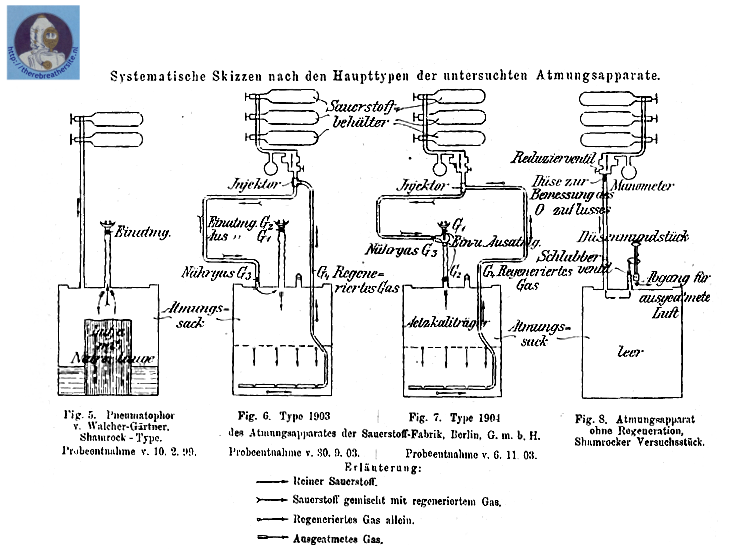
In later years the shamrock pneumatophor was part of research to improve performance. Other units were build by
Oxygen fabrik Berlin GMBH and Dräger. Clearly can be seen the simple design of the Shamrock type and the use of Caustic Soda Liquid
to remove the CO2.
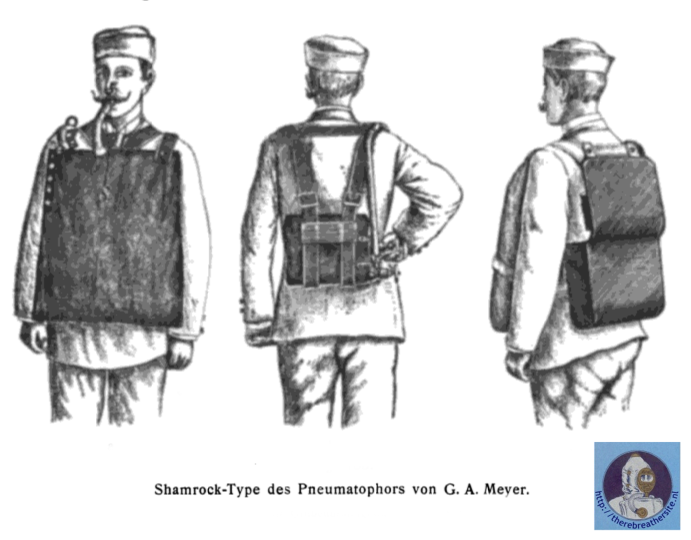
The Shamrock Pneumatophor had two bottles on the back. The breathing bag was worn on the chest.
Over the bottles on the bag there was a special bag in wich the caustic soda liquid and tools were placed.
Arrived near the workplace, before entering the ‘faul’ air, the liquid was poored in the breathing bag.
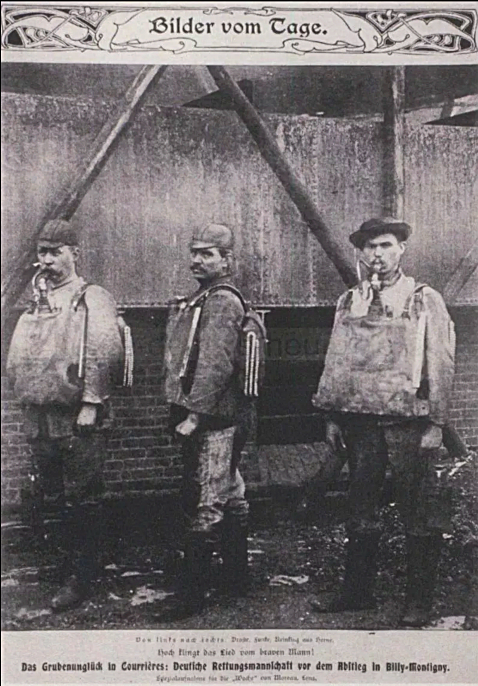
This picture shows the actual Shamrock unit

(Courtesy Glück Auf) This pictures shows the conditions in which the unit was used……
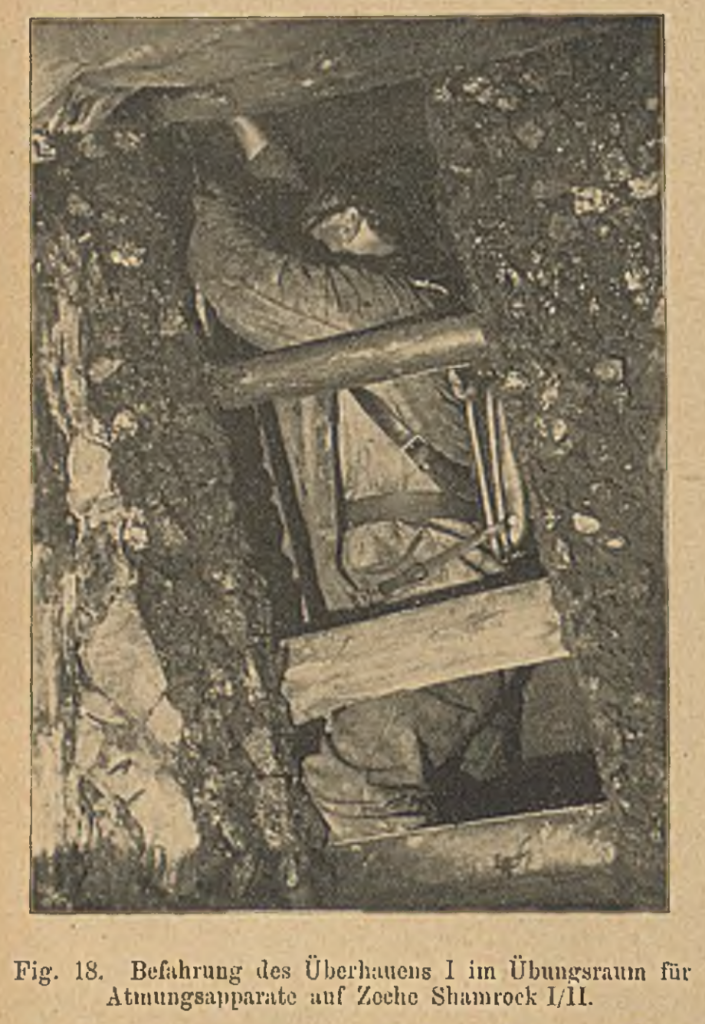
(Courtesy Glück Auf) This pictures shows the conditions in wich the unit was used……


Two horizontal bottles, no visible scrubber because the CO2 was scrubbed in the breathing bag, one tubing to the mouthpiece,
one to the breathing bag, pendulum breathing, pressure gauge on the bag… , bottles have different handwheels.

Frontview
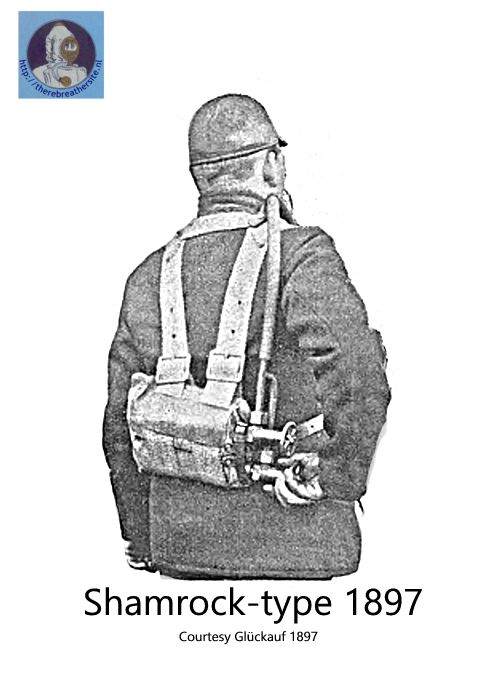
Backview
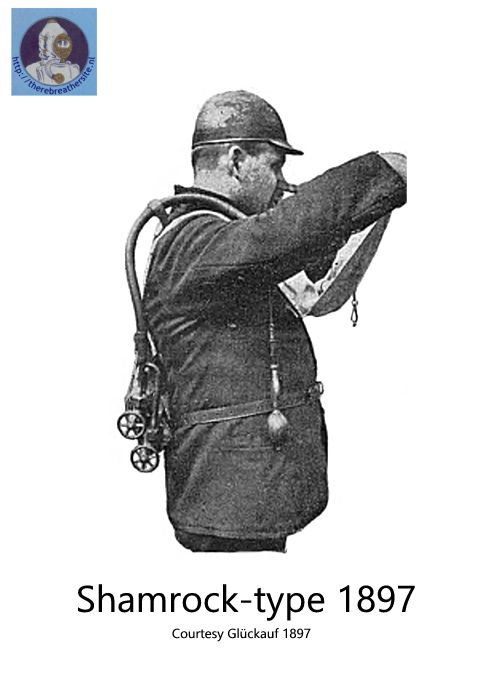
Side-view
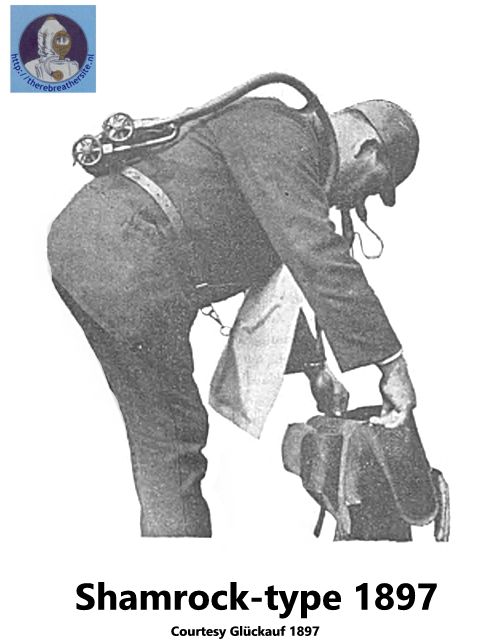
Hanging the liquid Soda Lime over the bottles on the back

Unit ready to go to the work area.
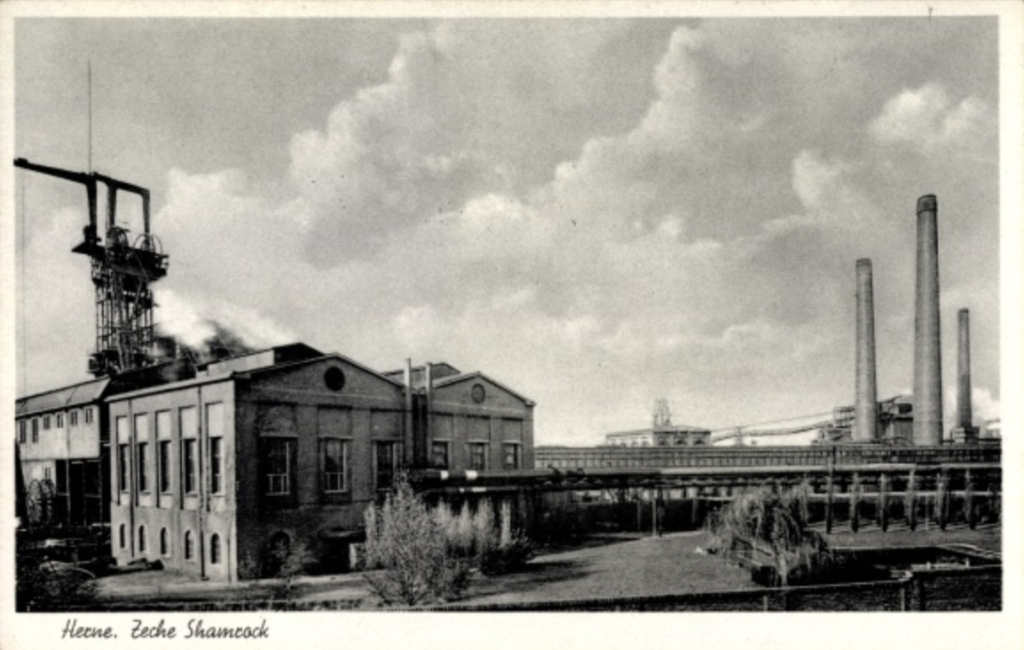
Old Postcard showing the mine area in Germany
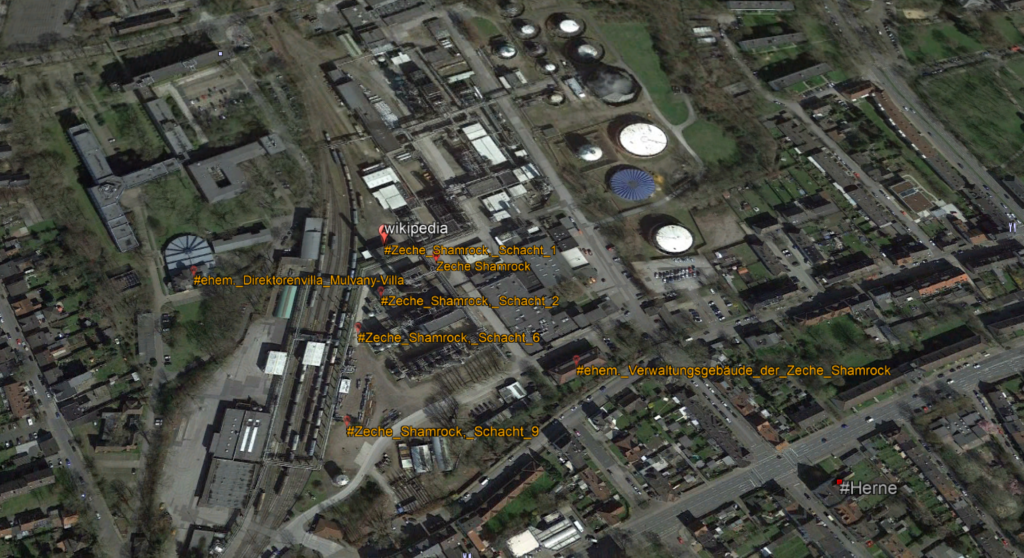
Location of the mine shafts in use until the 60’s
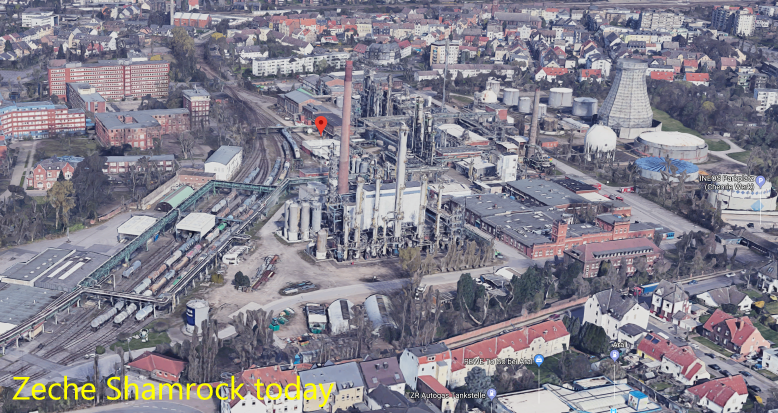
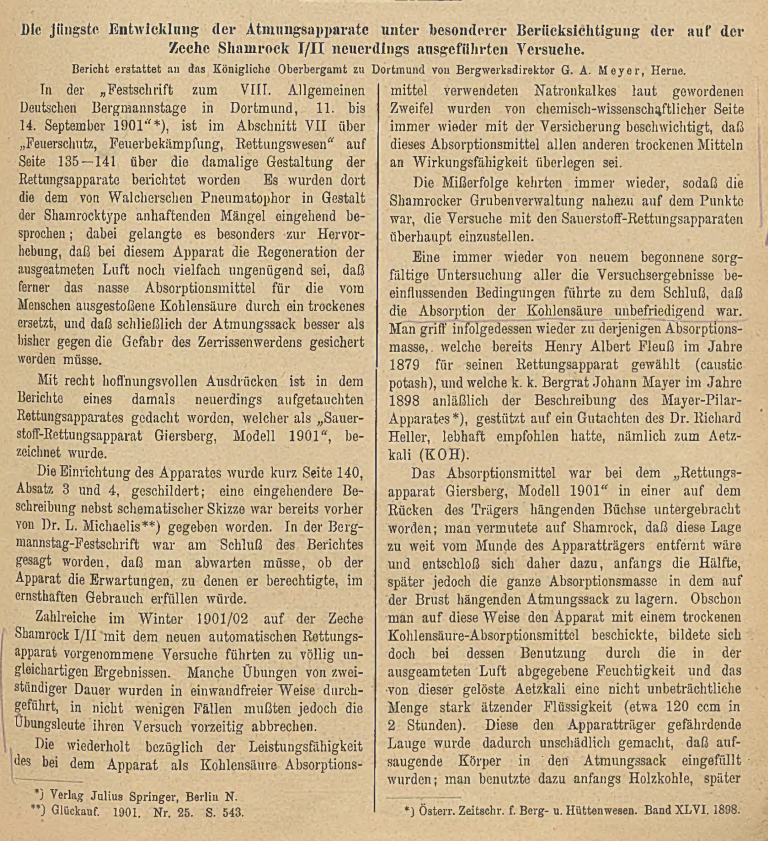
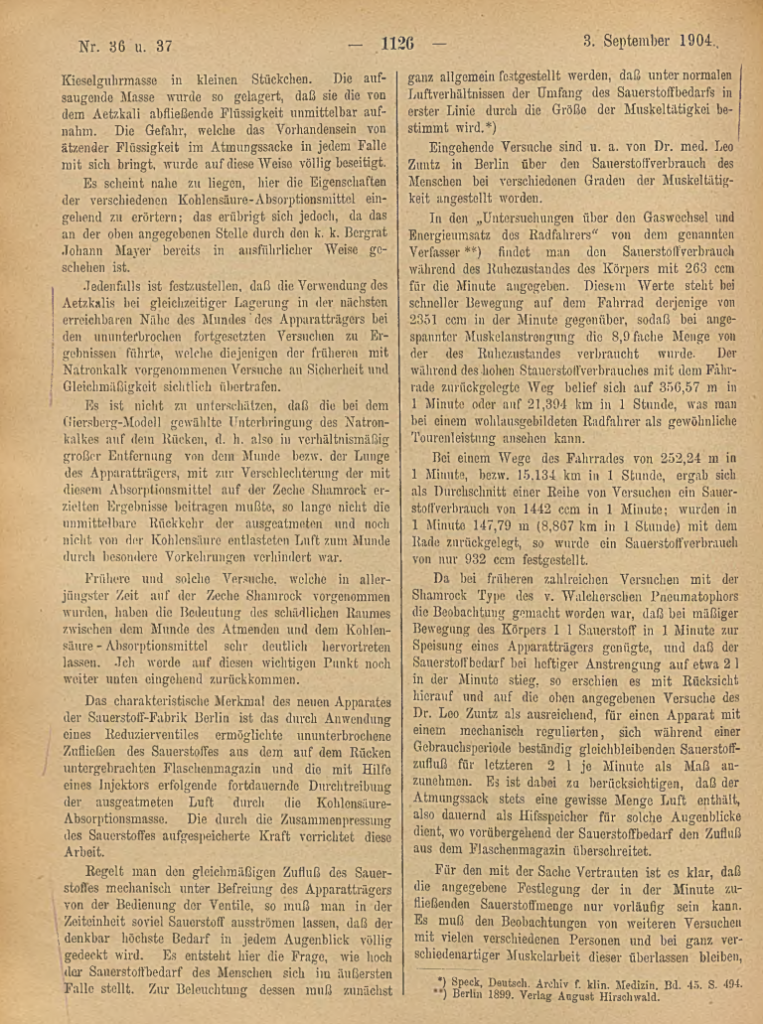
The Area today in Zeche Germany
Report from Gluckauf (Courtesy Glückauf) 3 september 1903
to improve performance of the breathingapparatus.
Finding pictures and information about the Shamrock type Pneumatophor was extremely difficult.
Not many information has been remained. If you have pictures or any addition, and especially photos of the unit these are more than welcome.
I have tried to add all credits to the used pictures.

Therebreathersite was founded by Jan Willem Bech in 1999. After a diving career of many years, he decided to start technical diving in 1999. He immediately noticed that at that time there was almost no website that contained the history of closed breathing systems. The start for the website led to a huge collection that offered about 1,300 pages of information until 2019. In 2019, a fresh start was made with the website now freely available online for everyone. Therebreathersite is a source of information for divers, researchers, technicians and students. I hope you enjoy browsing the content!
